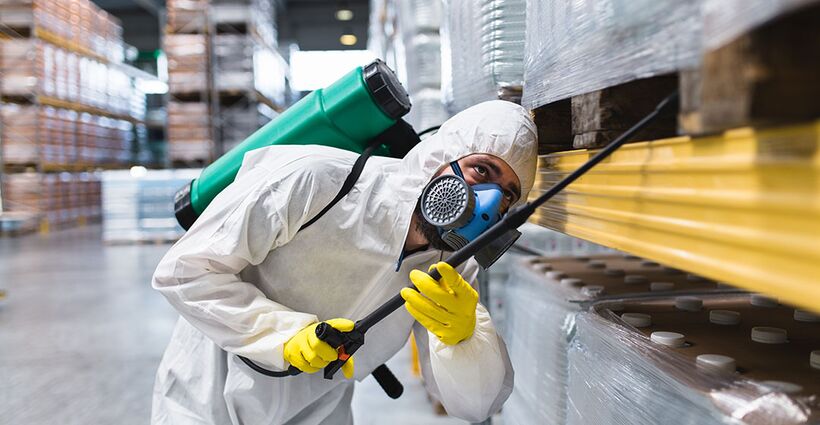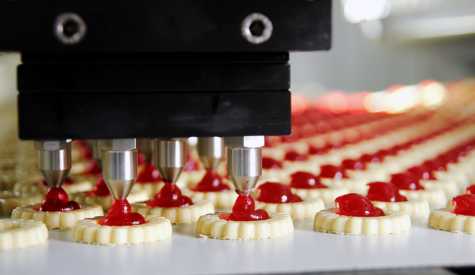Pest Control in Food Manufacturing

Pests are naturally drawn to food manufacturing and processing plants. Common pests in and around these facilities include rodents, flies, cockroaches, beetles, spiders, and birds. They can compromise the cleanliness of an otherwise sanitary facility because they can transmit disease and track bacteria—including Listeria and Salmonella—from raw ingredient areas to ready-to-eat areas.
Pest Prevention
Your employees are the facility’s first line of defense against pests. Because they spend a significant amount of time in work areas, storage areas, break rooms, and other parts of your facility, they can easily be trained to spot signs of pests before the problem escalates to a full infestation. They’re also responsible for proper cleaning and sanitizing procedures, which can prevent pest attraction. Proper pest control training for all employees can save your facility millions of dollars in damaged product, recalls, lawsuits, and loss of sales due to a damaged reputation. Regular inspections and preventative measures, such as traps, can help prevent an infestation from growing out of control.
Detecting Pests
Early detection is key in combating infestations. If you suspect that you have pests, look for:
Rodents-
- Droppings and urine
- Bite marks on products, packaging, and structures
- Tracks
- Loose fur
- Smears from body oil
- Visual sighting
Insects:-
- Damaged food products
- Larvae or pupae on food storage bins or equipment
- Visual sighting
Birds-
- Droppings
- Noise
- Nests
- Visual sighting
To adequately counter pests in your facility, you need to know exactly what you’re fighting. It’s not enough to know that you have cockroaches; you should set traps to capture samples so that pest control experts can determine the exact breed that is present and adjust their response accordingly.
Combating Pests
If an infestation is severe, you should call in a pest control professional. Don’t attempt to use pesticides in your facility unless you’ve been specifically trained to do so; many of these products aren’t food-safe and can easily contaminate the products in your facility. Your facility should have a written pest control program as part of your Hazard Analysis and Critical Control Points plan (HACCP). Train all employees on this plan and have supervisors periodically perform checks to ensure that everyone is following proper procedures.
You can also alter your facility to make it less pest-friendly. Consider installing rubberized roofing and wires, nets, or needle strips to prevent birds from roosting on your facility’s roof. Gravel trenches and strips surrounding your facility can prevent rodents from running across or burrowing into the facility. Outdoor sodium vapor lighting attracts fewer insects than traditional mercury lighting.
Conclusion
Preventative measures keep pests from entering your facility and infestations from growing out of control. All employees in your facility should be trained on your specific pest control plan, and all proper cleaning and sanitizing procedures. If pests are detected, you can use traps, pesticides, and facility controls like gravel trenches and bird needle strips to control the infestation.
This blog is part of a food manufacturing safety series. For more topics, visit the blogs below:
- Listeria Control in Food Manufacturing
- Floor and Drain Cleaning in Food Manufacturing
- Cleaning and Sanitizing in Food Manufacturing
- Foreign Material Control in Food Manufacturing
- Proper Hand Hygiene and Handwashing in Food Manufacturing
- Salmonella Control in Food Manufacturing
- How Are Food Manufacturing Workers Protected From Chemical Exposure?
- Current Good Manufacturing Practices in Food Production
- How do Food Manufacturers Use Hazard Analysis and Critical Control Point (HACCP) Plans to Protect Consumers?
- 12 Ways Food Manufacturers Protect Consumers Who Suffer From Food Allergies
- Food Defense


